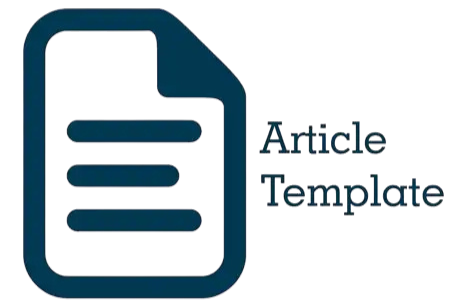Improving the Teachers Skills in Semarang City and Surrounding Areas in Using PhET Simulations Application-Based Virtual Laboratories
DOI:
https://doi.org/10.21580/dms.2023.232.14403Keywords:
PhET Simulation, n-gain, Teacher Skills, Virtual Laboratory, Physics PracticumAbstract
The practicum learning process transformed from offline to online during the pandemic. Teachers must have the skills to use virtual laboratory applications to improve the learning process. Community service activities have been carried out in the form of virtual laboratory training to improve the skills of junior-senior high school teachers based on the PhET Simulations application in the city of Semarang and surrounding areas. Evaluation of training activities using the self-assessment questionnaire method before and after the participants attended the training. The questionnaire comprises four aspects of ability: the ability to access the virtual practicum application, use the PhET application via a browser, download simulations on the PhET Simulations application, and use the PhET Simulation application as a means of physics practicum. Based on the analysis of the n-gain test, the results of increasing competence were 32% of participants included in the high category, 30% of participants included in the medium category, and 38% of participants included in the low category.
Downloads
References
Adam, Riza Ibnu, Adhi Rizal, and Susilawati. 2020. “Pelatihan Penggunaan Laboratorium Virtual Untuk Meningkatkan Kualitas Pemahaman Konsep Fisika Di SMA Negeri Karawang.” Jurnal Penelitian Dan Pengabdian Kepada Masyarakat UNSIQ 8, no. 1: 95–98.
Adams, Wendy, Noah D. Finkelstein, Michael Dubson, and C.E. Wieman. 2006. “PhET: Interactive Simulation for Teaching and Learning Physics.” The Physics Teacher 44.
Angraini, Lily Maysari, Rahadi Wirawan, and Nurul Qomariyah. 2019. “Penerapan Metode Eksperimen Berbasis Laboratorium Virtual Untuk Meningkatkan Keterampilan Mengajar Guru Fisika SMA Se-Kabupaten Lombok Utara.” Jurnal Warta Desa 1, no. 2.
Aryani, Diah, Syahrizal Dwi Putra, Noviandi Noviandi, Nenden Siti Fatonah, Hani Dewi Ariessanti, and Habibullah Akbar. 2022. “Pelatihan Pembuatan Video Pembelajaran Berbasis Multimedia Dengan Metode Community Based Participatory Action Research (CBPAR).” Jurnal Abdidas 3, no. 6: 1091–1100. https://doi.org/10.31004/abdidas.v3i6.728.
Bhakti, Yoga Budi, Irnin Agustina Dwi Astuti, and Dasmo. 2019. “Peningkatan Kompetisi Curu Melalui Pelatihan PhET Simulation Bagi Guru MGMP Fisika Kabupaten Serang.” J-ABDIPAMAS (Jurnal Pengabdian Kepada Masyarakat) 3, no. 2.
Burns, Janice C, Deanna Y Cooke, and Christine Schweidler. 2011. “A Short Guide to Community Based Participatory Action Research.” Advanced Project-Healthy City, no. December 2011: 1–18. https://hc-v6-static.s3.amazonaws.com/media/resources/tmp/cbpar.pdf.
Fahmi, Ardani Aulian. 2019. “Paradigma Unity of Sciences UIN Walisongo Dalam Perspektif Richard Rorty.”
Hake, R.R. 1999. “Interactive-Engagement versus Traditional Methods: A Six-Thousand Student Survey of Mechanics Test Data.” American Journal of Physics 66, no. 1.
Herliandry, Luh Devi, Nurhasanah, Maria Enjelina Suban, and Heru Kuswanto. 2020. “Pembelajaran Pada Masa Pandemi Covid 19.” Jurnal Teknologi Pendidikan 22, no. 1. https://doi.org/https://doi.org/10. 21009/jtp.v22i1.15286 Abstract:
Imron, Ali, and Ma’as Shobirin. 2021. “Pengembangan Bahan Ajar Berbasis Kearifan Lokal Bagi Guru MI Di Kota Semarang.” Dimas: Jurnal Pemikiran Agama Untuk Pemberdayaan 21, no. 1: 71–100. https://doi.org/10.21580/dms.2021.211.7342.
Martínez, Guadalupe, Francisco L. Naranjo, Angel L. Pérez, Maria Isabel Suero, and Pedro J. Pardo. 2011. “Comparative Study of the Effectiveness of Three Learning Environments: Hyper-Realistic Virtual Simulations, Traditional Schematic Simulations and Traditional Laboratory.” Physical Review Special Topics - Physics Education Research 7, no. 2: 1–12. https://doi.org/10.1103/PhysRevSTPER.7.020111.
Nurpratiwi, Suci, Amaliyah, Ahmad Hakam, and Nada Arina Romli. 2021. “Developing Teacher Professionalism in Online Learning Through Assistance of Web-Based Digital Teaching Materials.” DIMAS: Jurnal Pemikiran Agama Dan Pemberdayaan 21, no. 2. https://doi.org/10.21580/dms.2021.212.9367.
Nuryantini, Ade Yeti, and Rully Agung Yudhiantara. 2019. “The Use of Mobile Application as a Media in Physics Learning.” Jurnal Penelitian Dan Pembelajaran IPA 5, no. 1: 72. https://doi.org/10.30870/jppi.v5i1.3732.
Qomariyah, Nurul, Rahadi Wirawan, Lily M. Angraini, and Kadek Nova Anggarani. 2019. “Peningkatan Kompetensi Guru Dalam Pembelajaran Fisika Berbasis Metode Eksperimen.” JURNAL ILMIAH POPULER 1, no. 2.
Riantoni, Cicyn, Astalini Astalini, and Darmaji Darmaji. 2019. “Studi Penggunaan PhET Interactive Simulations Dalam Pembelajaran Fisika.” Jurnal Riset Dan Kajian Pendidikan Fisika 6, no. 2: 71. https://doi.org/10.12928/jrkpf.v6i2.14202.
Sartika, Septi Budi, Nur Effendi, and Luluk Iffatur Rocmah. 2020. “Pelatihan Penggunaan Laboratorium Virtual Bagi Guru IPA Dan Matematika Di SMP Sepuluh Nopember Sidoarjo.” Dedication: Jurnal Pengabdian Masyarakat 4, no. 2.
Setya Putri, Syafira, Siti Nur Khotimah, Muhammad Rayvan, Yosi Oktaviani, and Agustina Dwi Astuti. 2021. “Pelatihan Physics Virtual Experiment Sebagai Solusi Praktikum Fisika Pada Masa Pandemi.” Jurnal PKM: Pengabdian Kepada Masyarakat 4, no. 4: 400–405.
Sujanem, Rai, Erwan Sutarno, and I Gede Aris Gunadi. 2019. “Pelatihan Dan Pendampingan Pembuatan Media Simulasi Praktikum IPA SMP Dengan Program Simulasi Phet.” International Journal of Community Service Learning 3, no. 1: 11–17.
Tai, Individualization, Epi Yarlis, S Pd, and M Si. 2022. “Model Pembelajaran Kooperatif Tipe Team Assisted” 2, no. 2: 124–31.
Wieman, Carl E., Wendy K. Adams, P. Loeblein, and Katherine K. Perkins. 2010. “Teaching Physics Using PhET Simulations.” Physics Teacher 48: 225–27.
Downloads
Published
Issue
Section
License
Copyright
The copyright of the received article shall be assigned to the journal as the publisher of the journal. The intended copyright includes the right to publish the article in various forms (including reprints). The journal maintains the publishing rights to the published articles. Therefore, the author must submit a statement of the Copyright Transfer Agreement.*)
Licensing

This work is licensed under a Creative Commons Attribution-ShareAlike 4.0 International License.
In line with the license, authors are allowed to share and adapt the material. In addition, the material must be given appropriate credit, provided with a link to the license, and indicated if changes were made. If authors remix, transform or build upon the material, authors must distribute their contributions under the same license as the original.
_______
*) Authors whose articles are accepted for publication will receive confirmation via email and send a Copyright Transfer Agreement.









